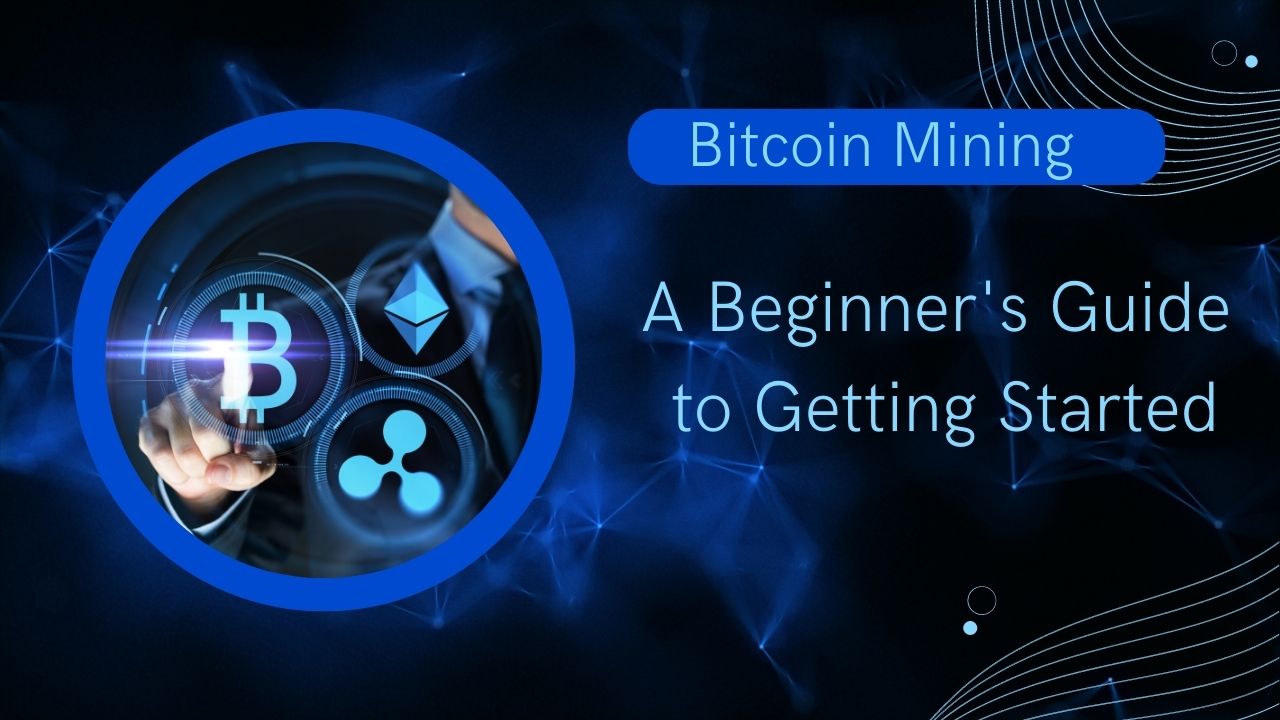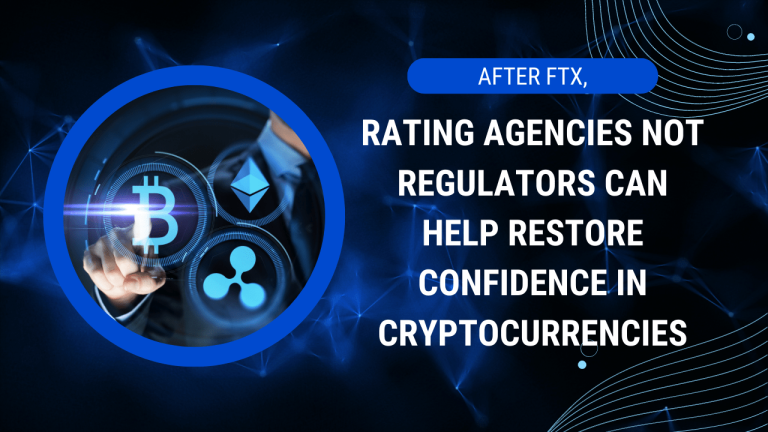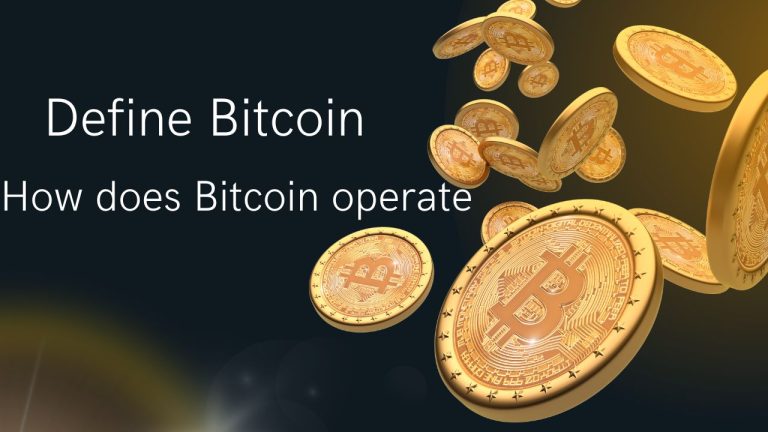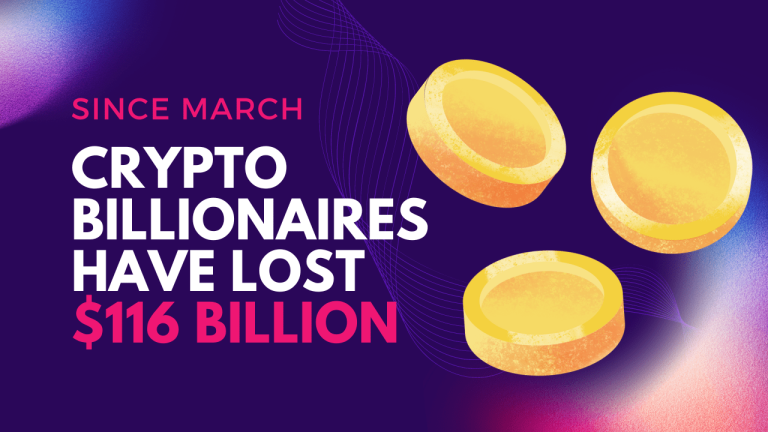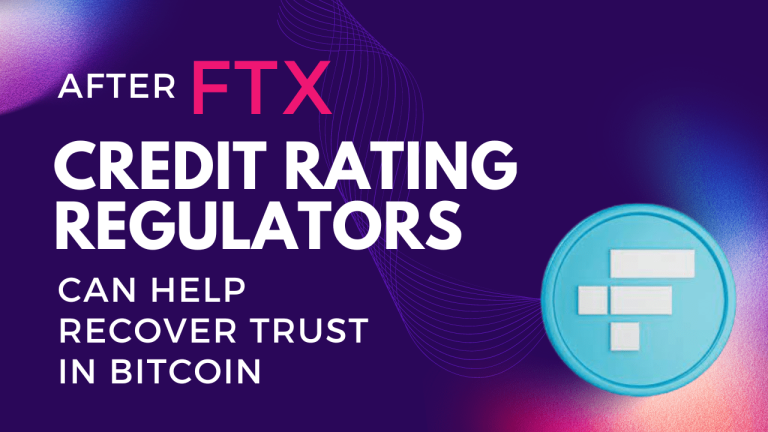Bitcoin Mining: A Beginner’s Guide to Getting Started
Define the mining for Bitcoin. Bitcoin mining is described.
Mining is the process of adding transaction records to the blockchain, which is the open ledger utilized by Bitcoin (BTC). It is a crucial component of the Bitcoin network as it solves the so-called “double-spend problem.”
The double-spend conundrum is the need to come to an understanding regarding a transaction history. Mathematical verification of Bitcoin ownership is made possible through public-key cryptography. Nevertheless, cryptography alone is unable to guarantee that a particular coin hasn’t already been delivered to another recipient.
To generate a shared history of transactions, an established ordering must be used, one that is based on elements such as the time that each transaction was created. Participants must have faith in each other because any external input might be distorted by the person supplying it.
In this post, we’ll talk about what cryptocurrency mining is, how to mine bitcoin, how it works, how much it costs to mine bitcoin, if mining bitcoin is legal, and the numerous issues that bitcoin miners encounter.
How does mining for Bitcoin operate?
To provide a dependable and trustworthy method of data organization, mining (roughly speaking, blockchain mining) makes use of financial incentives. Decentralized third parties are paid when they put orders for transactions. On the other hand, as long as the majority of people continue to be honest, every wrongdoing is financially costly.
In the case of Bitcoin mining, this result is obtained by generating a string of blocks that, with a particular outlay of resources, can be mathematically demonstrated to have been stacked in the right order. The operation is dependent on the mathematical properties of a cryptographic hash, a widely used technique for data encoding.
Since hashes are one-way encryption techniques, it is essentially impossible to decrypt them back to their input data without first looking at every conceivable combination and making sure the result matches the desired hash. So how is Bitcoin produced?
Bitcoin miners carry out the following tasks: They go through trillions of hashes every second until they find one that satisfies the “difficulty” criterion. Because both the difficulty and the soup are relatively large amounts given in bits, the only requirement is that the hash is smaller than the difficulty.
Every 2016 Bitcoin block, or roughly every two weeks, the difficulty is updated to keep a constant block time, which refers to how long it takes to find each new block when mining.
The hash that miners create, which is used to identify each block, is composed of the data from the block header. The two most important components of the hash are the Merkle root, another aggregated hash including the signatures of each transaction in that block, and the unique hash from the previous block.
Thus, altering even a little portion of a block would substantially alter both its anticipated hash and those of all succeeding blocks. This fake blockchain would be promptly rejected by nodes, protecting the network from disruption.
The technique makes sure that the difficulty requirement makes use of the time and effort invested by Bitcoin miners hashing through all possible combinations. The term “proof-of-work” is used to distinguish Bitcoin’s consensus technique from other types of block-creation mechanisms. The only way for malicious organizations to harm the network is to completely replicate its mining power. With Bitcoin, that would cost several billions of dollars.
A BTC usually takes 10 minutes to create, but this is only true for computers with strong processing capability. The Bitcoin mining equipment you use will determine how rapidly you can mine.
Why is Bitcoin mined?
In many ways, mining Bitcoin is akin to mining gold. Cryptocurrency mining, as it applies to Bitcoin, is a computer-based process that creates new bitcoins and records ownership and transactions. Mining for bitcoins and gold both uses a lot of energy and has significant financial rewards.
As a result, mining Bitcoin can help you make money or win prizes. Some Bitcoin miners form mining pools to pool their resources with those of other miners. Mining cooperatives have a higher chance of winning prizes and sharing earnings. Members of the pool must also pay an extra charge to join the pool.
If playing with computers and learning about new technologies interest you, and if money is not your primary concern, you might want to start mining Bitcoin. Configuring Bitcoin mining, for example, can teach you more about how your computer and blockchain-based networks work.
Is mining Bitcoin profitable?
Please perform a cost-benefit analysis (using online calculators) to determine whether Bitcoin mining is worthwhile to get the answer to the aforementioned query. Cost-benefit analysis is a methodical method used by organizations to determine which activities should be pursued and which should be avoided.
Determine your willingness to invest the required start-up funds in hardware, as well as the future value of Bitcoin and the level of difficulty, before committing your resources. It is also vital to take into account the level of difficulty specific to the cryptocurrency you want to mine to decide whether the mining operation would even be lucrative.
When both Bitcoin prices and mining difficulty drop, it typically means that fewer miners are mining BTC and that getting BTC is easier. But, as Bitcoin prices and mining difficulty climb, anticipate more miners to contend for fewer BTC.
Is mining Bitcoin permitted?
If you’re wondering whether mining bitcoins is legal, the adoption by many authorities suggests that it is. For instance, one of the biggest Bitcoin mining operations ever was started by the Icelandic business Enigma.
In Israel, cryptocurrency mining is regarded as a company and is therefore taxed at the corporation rate. However, the Financial Crimes Enforcement Network (FinCEN) in the United States classifies cryptocurrency miners as money transmitters, making them potentially susceptible to the regulations that apply to that type of activity.
As stated by El Salvador’s President Nayib Bukele in November 2021, a new “Bitcoin city” would also be constructed close to the Conchagua volcano in the shape of a coin. All across the city, geothermal energy will be used to fuel Bitcoin mining. Blockstream, a provider of crypto infrastructure, will assist El Salvador in raising a $1 billion “Bitcoin bond” to start the city’s building.
The only places where mining bitcoins is not allowed are Algeria, Nepal, Russia, Bolivia, Egypt, Morocco, Ecuador, and Pakistan. To determine whether Bitcoin mining is permitted in your area, you should always check the local laws where you live.
The payment system for Bitcoin miners
The network compensates Bitcoin miners for their efforts by rewarding them for producing new blocks. The two main types of incentives are the new Bitcoin that is created with each block and the transaction fees that users pay to access the network. So what does a miner get paid?
The block reward, which was 6.25 BTC for every newly produced Bitcoin as of May 2020, accounts for the majority of the miners’ income. This value is intended to be cut in half at regular intervals of roughly four years so that eventually no more Bitcoin will be mined and only transaction fees will guarantee the security of the network.
By 2040, there will only be 80,000 Bitcoin available for purchase out of a total of 21 million, and the block reward will be less than 0.2 BTC. Until the final Bitcoin is carefully mined in 2140, mining will continue.
The block reward does decrease over time, but prior halvings have been more than offset by increases in Bitcoin’s price. Bitcoin miners are rather confident in their chances even if there is no guarantee of future results. There are no intentions to phase down the current mining setup, unlike Ethereum, another large mineable coin because it is popular with the community. Individual Bitcoin miners can be certain that the company will be successful given the right conditions.
Even though the mining industry is very competitive, getting started is still fairly easy. When Bitcoin first emerged, supporters could simply install some software and get started. Even though those times are long gone, setting up a dedicated Bitcoin miner is not as challenging as it would first seem.
How should hardware for mining Bitcoin be selected?
The first thing to keep in mind if you’re wondering how to mine Bitcoin is that there is only one way to do it: purchase a Bitcoin mining device, also known as an Application-Specific Integrated Circuit (ASIC) device.
These gadgets are only capable of mining Bitcoin, but they are very effective at it. They are so effective that when they were introduced in 2013, all other varieties of computing mining equipment were quickly rendered obsolete.
If you wish to mine using conventional CPUs, GPUs, or more advanced FPGAs, you must take into account other coins. These machines can mine Bitcoin, but because they work so slowly, it is inefficient to use electricity and time.
For comparison, the AMD 7970, the best graphics card on the market soon before the development of ASICs, generated 800 million hashes per second. The average ASIC currently produces 100 trillion hashes per second, which is a 125,000-fold difference.
Hash rate, often known as the number of hashes generated per second, is a crucial performance indicator for mining equipment.
While investing in a Bitcoin mining device, two more variables should be taken into account. The first is watt-based electricity consumption. Of the two devices that produce the same number of hashes, the one that consumes the least electricity will be more profitable.
The cost per unit for each gadget makes up the third metric. Having the most energy-efficient ASIC in the world is useless if mining takes ten years to pay for it.
ASIC producers in the Bitcoin ecosystem, which is fairly active, frequently have different views on these three criteria. ASICs that are more efficient but more expensive may be developed by some, whereas less efficient but less expensive hardware may be developed by others. Before determining which gadget will meet your wants the finest, it is crucial to comprehend the other elements affecting Bitcoin mining income.
Bitcoin mining’s economics
The real estate market and Bitcoin mining both depend heavily on location. Depending on where in the world you are, different regions have different average electricity prices. In many wealthy nations, residential electricity is frequently far too expensive for mining to be profitable.
The cost of electricity, which frequently ranges between $0.15 and $0.25 per kilowatt-hour, makes it unprofitable to mine bitcoins in residential areas.
Professional Bitcoin miners frequently locate their facilities in areas with exceptionally inexpensive electricity. The Sichuan region of China, Iceland, the Irkutsk region of Russia, and several regions in the United States and Canada, are just a few examples. These areas typically feature some type of locally produced, inexpensive electricity generation, like hydroelectric dams. The rates that these Bitcoin miners regularly receive are less than $0.06 per KWh, which are typically low enough to provide profits even during market downturns. To sustain a successful enterprise, prices below $0.10 are typically advocated. A person’s situation has a big impact on where they choose to mine. Individuals in developing nations might not even need to leave their homes, whilst those in developed nations probably face greater entry restrictions.
Can you make money mining Bitcoin?
In addition to the gear they utilize, market conditions and the existence of other miners have a big impact on a miner’s earnings and income. During bull markets, the price of Bitcoin may soar higher, increasing the monetary value of the BTC they mine.
Bull market inflows are balanced out, though, by additional Bitcoin miners who perceive the rising earnings and buy more equipment to access the revenue stream. Each miner now produces less Bitcoin than they did in the past as a result.
The revenue soon tends forward with a market equilibrium where fewer productivity workers start to make less money than they spend on power, turning off equipment and enabling others to make more money.
This typically takes place later. There is a slight delay since ASICs are sometimes unable to keep up with the rise in the price of Bitcoin.
In a downturn market, the opposite rule applies Revenue declines until miners start shutting down their equipment in large numbers. Existing Bitcoin miners need to choose a location and hardware setup that will give them the competitive advantage they need to stay in business. Additionally, they must constantly maintain and reinvest their money because more advanced equipment might utterly stifle the revenues of older miners.
Evaluation of the profitability of heavy machinery
On websites like AsicMinerValue, CryptoCompare, and Nicehash, a variety of calculators are available for rapid calculations regarding the profitability of a mining device. The following formula can be used to manually estimate profit:
Daily income = your hash rate, block reward, the daily number of new blocks, and currency reward
combined hash rate
This is the formula that many of these calculators employ, and it merely equals your portion of the network’s total hash rate divided by the amount of money the network has issued overall in dollars. The required input values can be discovered on data websites like Blockchain.com or Coinmetrics, or they can be fixed parameters (because Bitcoin blocks take 10 minutes to mine, Six blocks are mined in an hour, and 144 are mined in a day.
The cost of power must also be deducted to calculate the profit. This may be done by simply multiplying the device’s power consumption by 24 hours a day and the electricity cost per kilowatt hour thanks to the equivalence between kilowatts and kilowatt hours.
The table below shows the most popular ASICs now available on the market along with their payback periods, or how long it would take the investment to pay for itself on current income. It’s important to remember that a Bitcoin miner’s earnings vary greatly over time, thus extrapolating results for a single day in the future may not be true. Yet, it’s a helpful metric to comprehend the relative efficacy of every gadget.
Purchasing and installing the hardware
Retail customers can purchase ASICs from many stores, and some manufacturers also permit direct purchasing. Although they are harder to get than standard graphics cards, anyone can purchase an ASIC for a reasonable price. It should be noted that purchasing mining equipment from merchants or producers shipping from other nations may result in high imports before
Before moving on, it is important to create an account with a preferred mining pool, which will then offer comprehensive instructions on how to connect to its servers. You must enter the pool’s connection endpoints and account details from the ASIC’s web interface. After that, the miner will start producing Bitcoin.
It is highly recommended that you mine through an established pool because you may create consistent returns by sharing your hardware with others. Your device will still be compensated for its contribution to mining even though it might not always locate the right hash to build a block.
The pros and cons of mining Bitcoin
In addition to the financial risk of not making a profit, controlling high-power devices like ASICs entails technological difficulties. To prevent mining equipment components from overheating and burning out, proper ventilation is necessary. One ASIC is most likely the most potent device in your home or workplace, dissipating all of the miner’s electrical usage as heat onto the surrounding space.
Also, it means that when mining bitcoins, you must carefully consider the limitations of your electrical grid. The electrical network in your home is rated for a maximum level of power, and each outlet has a separate rating as well. Overstepping those boundaries might easily lead to continual outages or electrical fires. To evaluate whether your Bitcoin mining setup is secure, consult a professional.
To keep the mining equipment in good condition, routine maintenance against dust and other environmental conditions is also necessary. ASICs might lose functionality sooner than anticipated without proper main although the fact that failures are quite uncommon.
The largest threat to the profitability of ASICs, despite the likelihood of individual failure, is the possibility that they may become outdated. Older machines will eventually be displaced by more productive miners.
Before becoming unprofitable in any electricity price scenario, historical generations of miners like the Bitmain S9, released around 2016, lasted roughly four years (except zero). Unfortunately, it is largely unpredictable how quickly computing technology will evolve.
Bitcoin mining is a business, just like any other. There is a chance for both rewards and risks. This tutorial should have served as a good beginning point for further analyzing both.
FAQS:
How can I start mining Bitcoin for the first time?
Install the Bitcoin mining software, join a mining pool, and get a mining setup to start mining Bitcoin at home. The process of adding transactions to the Bitcoin blockchain, a decentralized public database of all Bitcoin transactions, is known as Bitcoin mining (BTC).
Is mining Bitcoins secure?
Mine-related risks are typically monetary and legal. As noted, mining is a risk in terms of money because one can spend time and money buying mining equipment costing hundreds or thousands of dollars only to get little return on their investment.
Can Bitcoin miners lie to you?
Blockchain is a type of digital ledger used to store cryptocurrency transactions. It is nearly impossible to hack into a blockchain because of the principles behind blockchain technology.
An ownership stake in a Bitcoin mining pool is known as a mining share. Owning a share entitles you to a fraction of the pool’s benefits. Higher-performing pools will normally cost more per share because shares are typically priced depending on the expected return of the pool.

